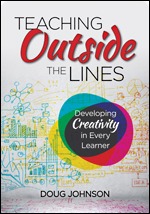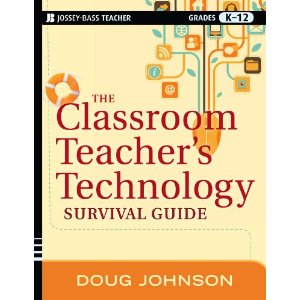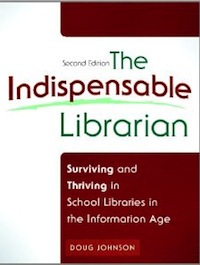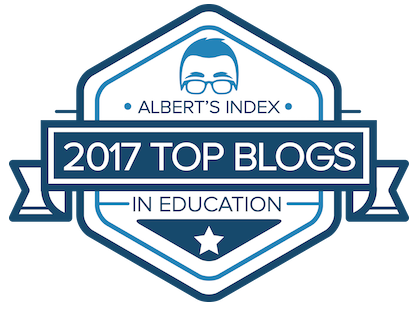... libraries ... are more potentially sustaining of learning and knowledge acquisition in the full range and lifelong run than any other mechanism - Roger Sween
Roger Sween is a retired member of the Minnesota Department of Library Services. He is also a passionate advocate for Intellectual Freedom, a supporter of libraries of all types, the husband of a school library media specialist, a very good writer, and pretty much an all-round good guy. This is his reaction to the defeat of our library bill for school library programs last week. He sent the following to our state's library/technology listserv and it is posted here with his permission...
The subject of an active, integrated school library media program has been dear to my heart forever. I say, forever, because as far back as my memory reaches, I have been addicted to books, reading, information-seeking, learning and libraries. Bookstores, too. By the time I left high school, I realized that it was what I had read and pursued on my own that made the greatest impact on my life. Most teachers were good; a few were extraordinary. Most textbooks were okay; a few were dreadful, and in subjects where I read widely thanks to libraries (history especially), I ignored the assigned texts as shallow and redundant of what I knew.
 Though I set out in college to become a historian, I first became by indirection a school librarian. More with the passage of time, I realized that libraries (or whatever we call them and however they function) are more potentially sustaining of learning and knowledge acquisition in the full range and lifelong run than any other mechanism. We do depend upon parents and teachers to give us our learning start, but nothing surpasses the ability to learn on one’s own as long as one has the attitudes, skills and resources from that start to become seekers.
Though I set out in college to become a historian, I first became by indirection a school librarian. More with the passage of time, I realized that libraries (or whatever we call them and however they function) are more potentially sustaining of learning and knowledge acquisition in the full range and lifelong run than any other mechanism. We do depend upon parents and teachers to give us our learning start, but nothing surpasses the ability to learn on one’s own as long as one has the attitudes, skills and resources from that start to become seekers.
In my latter years, I came to realize that what seemed so obvious to me was not obvious to others, and I wondered why. As I have continued to ponder this matter since leaving employment in 2000, a possibility has dawned on me: Most people perceive that education qua classrooms and teachers exists primary to learning, and not the reverse. Thus anything that exists outside of teaching – conversation with others, reflective experience, reading on one’s own, self-directed learning, exposure to the skills and benefits of using our cultural heritage – becomes secondary and suspect from the primacy of education. This is a theory, but I am working on it.
Now, one way to overcome the subordinate position of learning in regards to library services in general and slm in particular is to require the service. In Minnesota, public library service is required but school library media service is not. I forget exactly when the requirement for public library service passed, but it was after I came to the state library agency in May 1984. MLA and the state library agency had been at it for some years, and it took some years more, at least ten years of incessant trying, so that it went into effect about 1990. Resisting county commissioners in those holdout counties were obstacles to participation and therefore of taxation. Local control and unfunded mandates became their chief arguments, but eventually legislators bit the bullet and made the requirement. What the law requires is that all counties tax for library services and join regional public library systems, and at that time about six rural counties remained hold outs. Municipalities that already tax for public library services are exempt from the county library tax. Statutes set property taxation levels at a minimum level based on valuation and taxing authorities within regional public systems are not allowed to reduce their current level without a corresponding decline in valuation. Participation in regional public library systems allows residents – over 99% of the state population – to a host of services that those outside of regional memberships do not have. Few other states have this level of service by which the state, the counties and the other municipal bodies all play their part.
The situation with school library media services, as most likely you all know, follows. Among the general powers the state gives to independent school districts is this provision:
The board may provide library facilities as part of its school equipment according to the standards of the commissioner of education. – Minnesota Statutes (2007) 123B.02 Subd.
As I have tried to point out kindly in the written testimony posted last week, the existing statute is a bit of a mess. Not only does it date from a decade in which school library facilities were new and uncommon but it references standards that do not exist and a authority for standards that past commissioner’s have said they do not have unless they are specifically directed to produce them. Further the current concept of school library media services is one of program, not of facilities and equipment except as they carry out program. Therefore I suggest that what the legislature do is update this section to require every school district to have a plan that puts resources into use through a school media program. Why would anyone be opposed to planning? It costs nothing but time and effort.
The current bill, if it is still live in the House, having died in the Senate, goes beyond my gradualist proposal and certainly should be considered. I had asked the other day about the reasons given to not report it from committee and found the fullest answer and discussion on Doug Johnson’s blog. I have chosen to carry on the discussion here. The same old reasons were given – local control and unfunded mandates. I am suspicious enough to think that these are not the real reasons.
The only reason for something to be optional and subject to local control is that it is not essential and therefore is elective. The only reason that something elective is valid is that it is marginal to the intended purpose – learning. Since research investigations in various states and over time have show that media services have their positive effect on student learning, then those still opposed must refute the research and not answer that it is a matter of local control.
The unfunded mandate argument is hooey and contrary to past legislative arguments. The legislature has argued for the last two decades in my experience that categorical funding for school library media programs is unnecessary since districts are awarded enough student aid formula funds to meet their needs. No question of scale, purpose, or method seems ever to have entered here. Therefore if districts have adequate funds and some districts do not employ them for school media services, then they are de fact providing unequal and inferior service to their students. The last time I looked, equal and efficient means of education was a guarantee in the Minnesota Constitution.
I think we have two choices: 1) Since legislators cannot be convinced in committee, they have to be won over through persistent dialogue one by one. This takes lots of conversation and lots of public interest. 2) Put public interest first and generate a ground swell of support that causes legislators to investigate on their own what this school media business is all about.
At basis, I think human nature is about potential and learning is the means of becoming one’s best. School media services are in the forefront of learning and of becoming as fully human as we can be. As hard as this endeavor is – one that is now decades old – this is why we have to do it. The trick is not to do it alone, but to build support.
--Roger Sween
Dubitando quippe ad inquisitionem venimus; inquirendo veritatem percipimus.
By doubting we come to enquiry, and through enquiry we perceive truth.
- Peter Abelard, Sic et Non [c.1120]
Image found at: www.baymontechristianlibrary.org/
 Thursday, December 11, 2008 at 05:12AM
Thursday, December 11, 2008 at 05:12AM 








